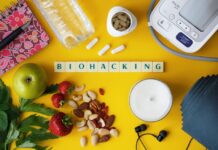When you embark on urban foraging, you're tapping into a centuries-old practice that transforms overlooked city spaces into reservoirs of nutritional bounty. You'll need a keen eye to identify species like Plantago major and Galium aparine, which often thrive in urban environments. Equip yourself with essential tools: a sturdy basket, gloves, and a comprehensive plant guide. Engaging with local foraging communities can offer invaluable insights into sustainable practices and legal considerations. But have you considered the seasonal intricacies that dictate what's available and when? This exploration could redefine your understanding of city ecosystems.
Key Takeaways
- Identify common urban edibles like dandelions and plantains, ensuring accurate identification to avoid toxic species.
- Utilize essential tools such as a foraging basket, pocketknife, and plant identification apps.
- Understand legal and ethical foraging practices, including respecting property rights and sustainable harvesting.
- Learn seasonal foraging opportunities, focusing on safe, uncontaminated areas for nutrient-rich finds.
- Engage with local foraging communities to share knowledge, resources, and enhance ecological literacy.
Understanding Urban Foraging
Urban foraging, a practice steeped in both tradition and innovation, involves locating and harvesting edible plants, fungi, and other natural resources within a cityscape. This act of reclaiming urban spaces for sustenance requires a keen understanding of botany, ecology, and local biodiversity.
You'll need to identify species that thrive amidst concrete and chaos, such as dandelions (Taraxacum officinale) and plantains (Plantago spp.), which aren't only edible but also nutrient-dense. Recognizing these resilient species becomes a form of empowerment, allowing you to access fresh, free food and subvert conventional consumer systems.
As you navigate this urban wilderness, it's crucial to consider ethical foraging practices. Prioritize sustainability by avoiding overharvesting and ensuring the continuous proliferation of urban flora. This means taking only what you need and leaving enough for plant regeneration and wildlife sustenance.
You're not only foraging for food but also fostering a deeper connection with your environment, challenging the boundaries between urban living and nature.
Moreover, urban foraging encourages you to critically analyze the socio-economic structures that dictate food accessibility. By leveraging public spaces for nourishment, you embrace a form of liberation, reducing reliance on commercialized food systems.
Essential Tools for Foraging
To effectively embark on your urban foraging journey, equip yourself with essential tools that enhance both efficiency and safety. A durable foraging basket or backpack is vital for collecting your finds. Opt for materials like wicker or canvas, which allow plants to breathe, preventing spoilage.
High-quality gardening gloves protect your hands from thorny plants and rough surfaces while providing tactile sensitivity for delicate foraging. A reliable pocketknife or folding pruning saw is indispensable for cutting stems and branches cleanly. Look for stainless steel blades to ensure longevity and corrosion resistance.
A magnifying glass aids in examining plant details, crucial for accurate identification and preventing ingestion of toxic species. Invest in a portable field guide or a digital app with an extensive plant database, providing you quick access to crucial information.
A notebook and pen are your mobile archive, allowing you to document locations, growth patterns, and seasonal changes for future reference. Consider a reusable water bottle to stay hydrated during long foraging excursions.
Lastly, a first-aid kit is a non-negotiable safety measure, addressing minor injuries promptly. With these tools, you'll navigate the urban wilderness with confidence and liberation.
Identifying Edible Plants
Equipped with your carefully chosen tools, you're ready to master the art of identifying edible plants in urban environments. Begin by understanding plant morphology—recognizing leaf shapes, edges, and arrangements can differentiate edible species from toxic lookalikes. Familiarize yourself with the botanical nomenclature to communicate effectively with fellow foragers and utilize plant identification apps for instant verification.
Prioritize learning about common urban edibles like dandelions (Taraxacum officinale), chickweed (Stellaria media), and purslane (Portulaca oleracea), which thrive in disturbed urban soils.
Pay attention to phenology; knowing the seasonal growth patterns of plants helps determine which parts are edible at specific times. For instance, young dandelion leaves are less bitter in early spring. Utilize sensory analysis—crushing a small leaf to release its aroma can be an initial indication of its identity. While smell alone isn't definitive, it complements visual identification.
Take note of microhabitats—some edibles prefer the shade of urban trees, while others flourish in sunlit cracks in sidewalks. Respect biodiversity by harvesting sustainably, ensuring the plant population remains viable.
Foraging Safety Tips
Safety-first foraging is essential when exploring urban environments for edible plants. Urban settings present unique challenges—contamination risks, identification intricacies, and legal boundaries.
First and foremost, familiarize yourself with phytoremediation. This natural process involves plants absorbing heavy metals from contaminated soils. Prioritize testing soil quality in your chosen foraging sites, ensuring you're not harvesting from polluted areas. Public parks often have cleaner conditions, but don't assume safety without verification.
Identify your plants with precision. Misidentification can lead to consuming toxic flora. Utilize botanical keys, which are comprehensive guides with dichotomous pathways, to ensure your finds are truly edible. Mobile applications equipped with image recognition can aid in this, but cross-reference with field guides for accuracy.
Consider the legalities. Foraging in urban areas can intersect with trespassing laws. Always seek permission when foraging on private property, and be aware of local ordinances that might restrict gathering in public spaces. The concept of "usufruct" often doesn't apply in city settings, where land ownership is strictly enforced.
Lastly, adopt sustainable foraging practices. Harvest responsibly, allowing plants to regenerate. By doing so, you ensure that urban nature remains a resource not just for you, but for the community and ecosystem at large.
Seasonal Foraging Opportunities
Seasonal foraging opportunities in urban environments require a keen understanding of plant phenology and local ecosystems. You must synchronize your efforts with the life cycles of plants, which vary dramatically throughout the year.
In spring, focus on ephemeral greens like nettles and dandelions, which thrive in disturbed soils. As summer approaches, urban orchards and berry patches burst with ripe offerings such as mulberries and blackberries, demanding your attention to detail in identifying safe, edible varieties.
Autumn is a time of abundance, with nuts like acorns and chestnuts ready for collection. Here, your ability to process and leach tannins becomes essential to transforming these raw resources into palatable food.
In winter, the urban forage might seem sparse, yet cold-hardy plants like chickweed and wild garlic persist, offering sustenance when nature appears dormant.
Observing microclimates within the city can reveal hidden troves of edible plants. South-facing walls may extend growing seasons, while shaded parks harbor moisture-loving species.
Legal Considerations and Etiquette
Why is understanding the legal framework essential for urban foraging? Navigating the legal landscape ensures you're not inadvertently trespassing or violating municipal ordinances.
Urban foraging exists at the intersection of public and private space, where ownership rights and community expectations converge. Knowing the specific regulations of your city can prevent legal repercussions, such as fines or arrest, and maintain a respectful relationship with local businesses and residents.
Research zoning laws, protected plant species, and property lines to forage confidently and responsibly.
Etiquette plays a pivotal role in ensuring urban foraging is sustainable and accepted. Always seek permission if you're foraging on private property.
Public spaces may seem open, but city parks often have rules regarding the collection of plant materials. Forage with respect—harvest only what you need and leave enough for wildlife and other foragers.
This practice, known as sustainable harvesting, ensures that urban ecosystems remain balanced and thriving. Additionally, be discreet and clean up after yourself to maintain the goodwill of the community.
Your actions can set a precedent, influencing how urban foragers are perceived and treated in the future. Respect and legality are your allies in urban foraging.
Sustainable Foraging Practices
Understanding sustainable foraging practices is crucial to preserving urban ecosystems and ensuring the long-term viability of foraging activities. Start by identifying native species and focus on those with abundant populations. This ensures you're not depleting resources vital for local wildlife. Use the principle of reciprocity: take only what you need, leaving enough for regeneration and ecological balance.
When foraging, adopt the "leave no trace" ethic. Avoid disrupting habitats or damaging plants. Recognize the life cycle of the plants you're gathering; for instance, harvest nuts and berries when they're ripe, allowing the plant to reproduce effectively. Pay attention to seasonal variations—timing your foraging with natural cycles minimizes ecological impact.
Employ a diverse foraging strategy. By not focusing solely on one species, you prevent overexploitation and promote biodiversity. Understand urban pollution levels; avoid areas with high contamination risk, like roadsides or industrial zones, to ensure both your health and ecological soundness.
Engage with local foraging communities to share insights and foster collective stewardship. Sustainable foraging liberates you from consumer-driven food systems and encourages a deeper connection with your urban surroundings, balancing human needs with ecological integrity.
Recipes and Culinary Ideas
Having embraced sustainable foraging practices, you now possess a bounty of urban-sourced ingredients ready to infuse your culinary creations with unique, local flavors. The key to liberating your palate lies in understanding how these ingredients can transform your dishes.
Start with wild greens like dandelions and purslane—both nutrient-dense and versatile. Sauté them with garlic and olive oil, letting the bitterness mellow into a savory base for frittatas or pasta.
Foraged fruits such as mulberries or elderberries can be the cornerstone of vibrant sauces or preserves. Simmer them with a touch of honey and a splash of lemon juice to create a tart compote, perfect for drizzling over pancakes or yogurt. These ingredients not only provide a symphony of flavors but also connect you to the rhythms of your urban landscape.
Experimentation is key. Introduce foraged herbs like wood sorrel or mint into your salads or teas. Their fresh, citrusy notes can invigorate standard recipes.
Frequently Asked Questions
How Can Urban Foraging Benefit Local Communities Economically?
You'll discover that urban foraging stimulates local economies by reducing food costs, promoting sustainable consumption, and encouraging resource-sharing. This practice enhances community resilience and empowers individuals to reclaim autonomy over their food sources, fostering economic liberation.
What Role Does Urban Foraging Play in Cultural Traditions?
Urban foraging revitalizes cultural traditions by reconnecting you with ancestral practices, promoting biodiversity appreciation, and fostering community resilience. It empowers you to challenge consumerism, cultivating self-reliance and a deeper understanding of your environmental and cultural heritage.
Are There Urban Foraging Communities or Groups to Join in Cities?
Yes, you can find urban foraging communities in cities that foster symbiotic relationships and ecological literacy. These groups empower you to reclaim autonomy, facilitating holistic interactions with urban ecosystems, while encouraging sustainable resource management and resilience-building practices.
How Can Children Be Safely Involved in Urban Foraging Activities?
Involve children by teaching them plant identification, emphasizing safety, and utilizing ethnobotanical knowledge. Foster their autonomy while ensuring adult supervision. Equip them with guidebooks and encourage exploration, curiosity, and respect for urban ecosystems. Instill environmental stewardship values.
What Are Some Common Misconceptions About Urban Foraging?
You might think urban foraging depletes resources or is illegal, but it's sustainable and often permissible. Misunderstandings arise from ecological ignorance and outdated legal assumptions, hindering your potential to engage responsibly and reclaim autonomy over food sources.
Conclusion
Embrace urban foraging as an enriching endeavor by honing your plant identification skills and utilizing essential tools like a reliable guide. Prioritize safety by understanding local flora and adhering to legal guidelines. Engage with foraging communities to exchange insights and refine sustainable practices. By exploring seasonal foraging opportunities, you'll deepen your connection to urban ecosystems and unlock culinary creativity. With mindful practices, you'll transform city landscapes into abundant resources, fostering a sustainable, nutritious lifestyle.







